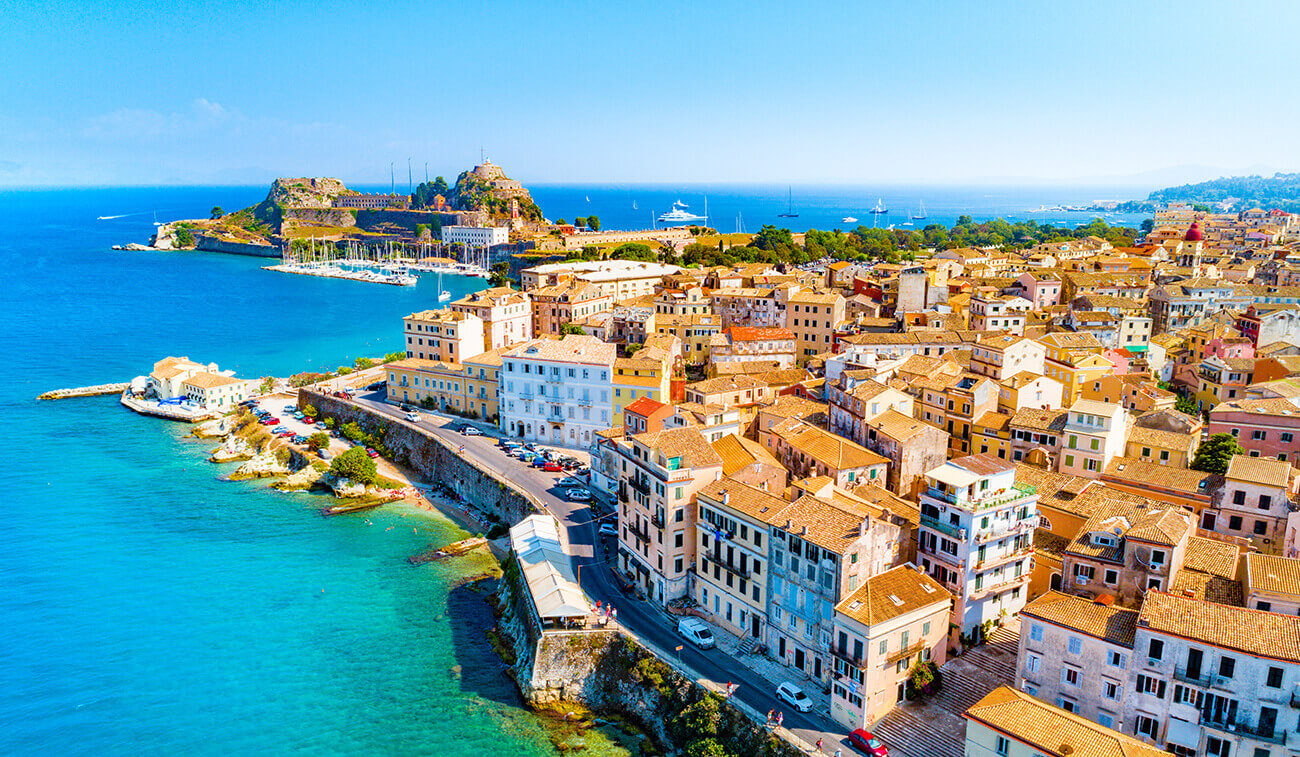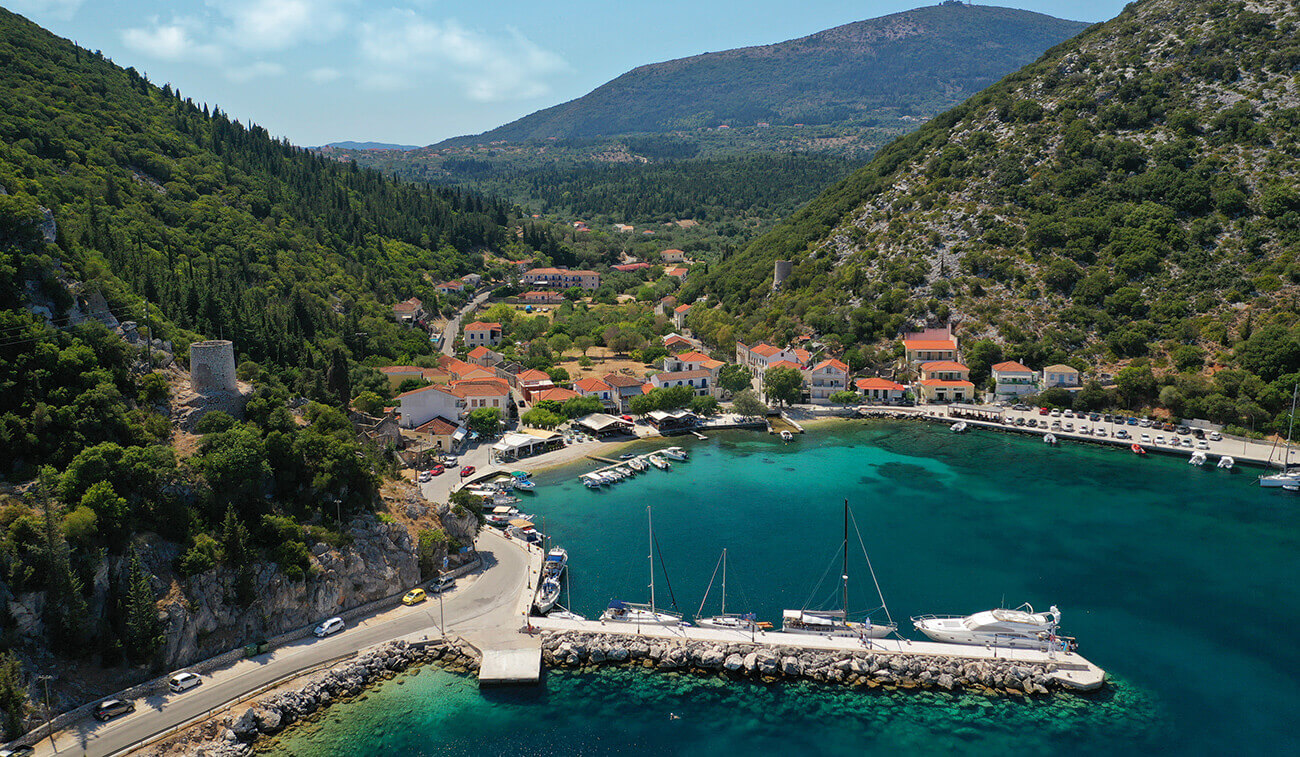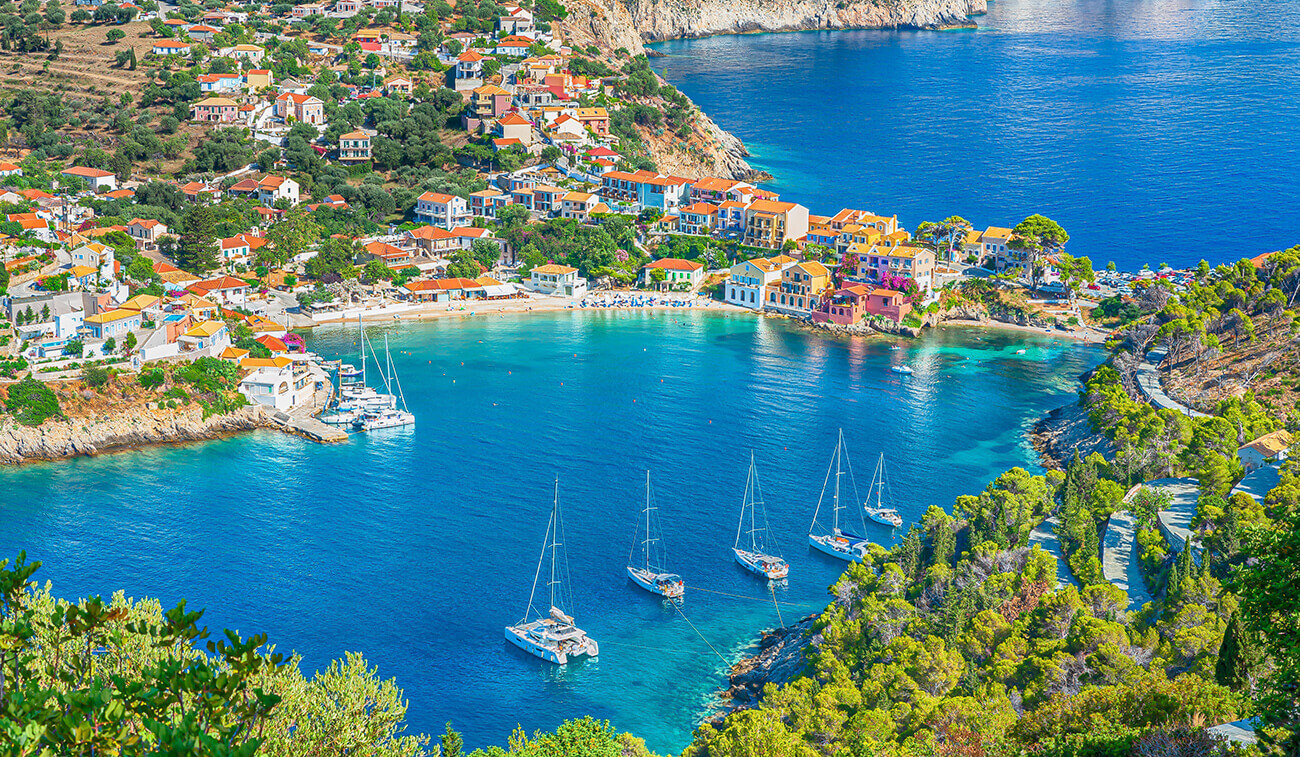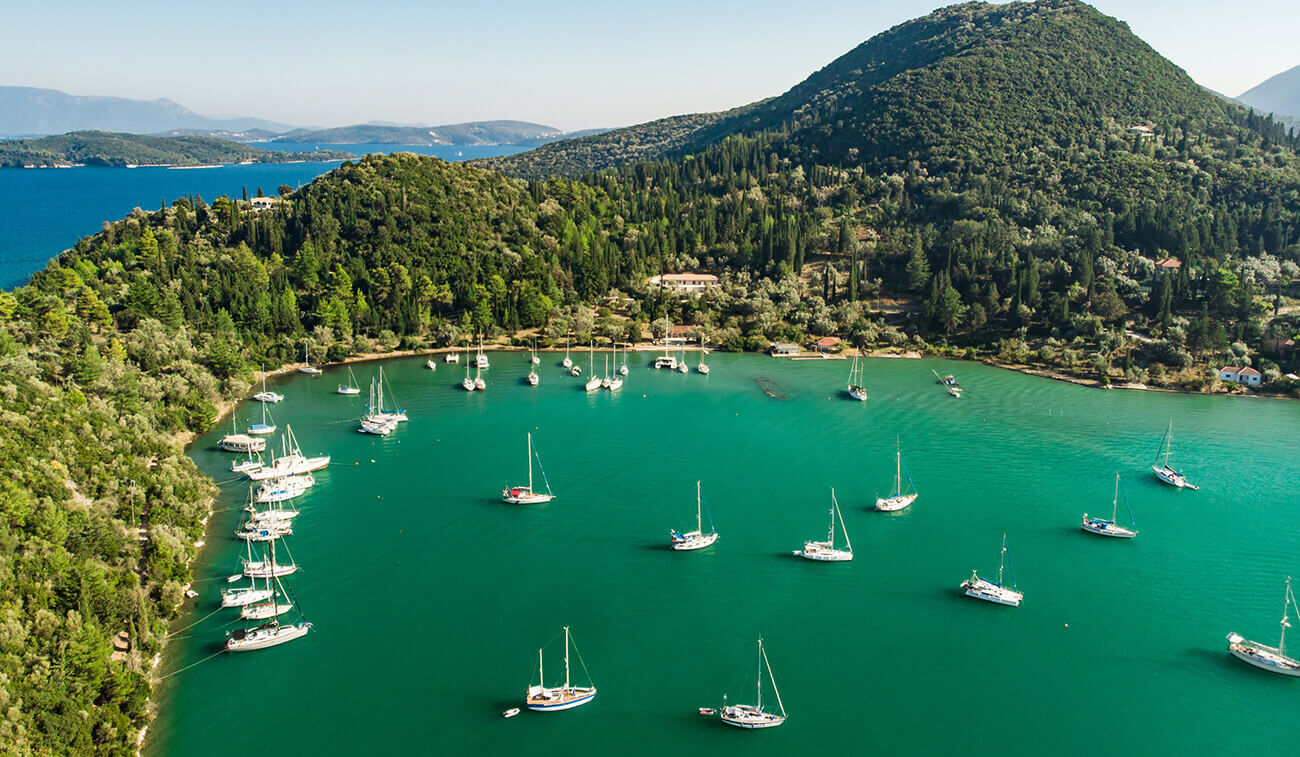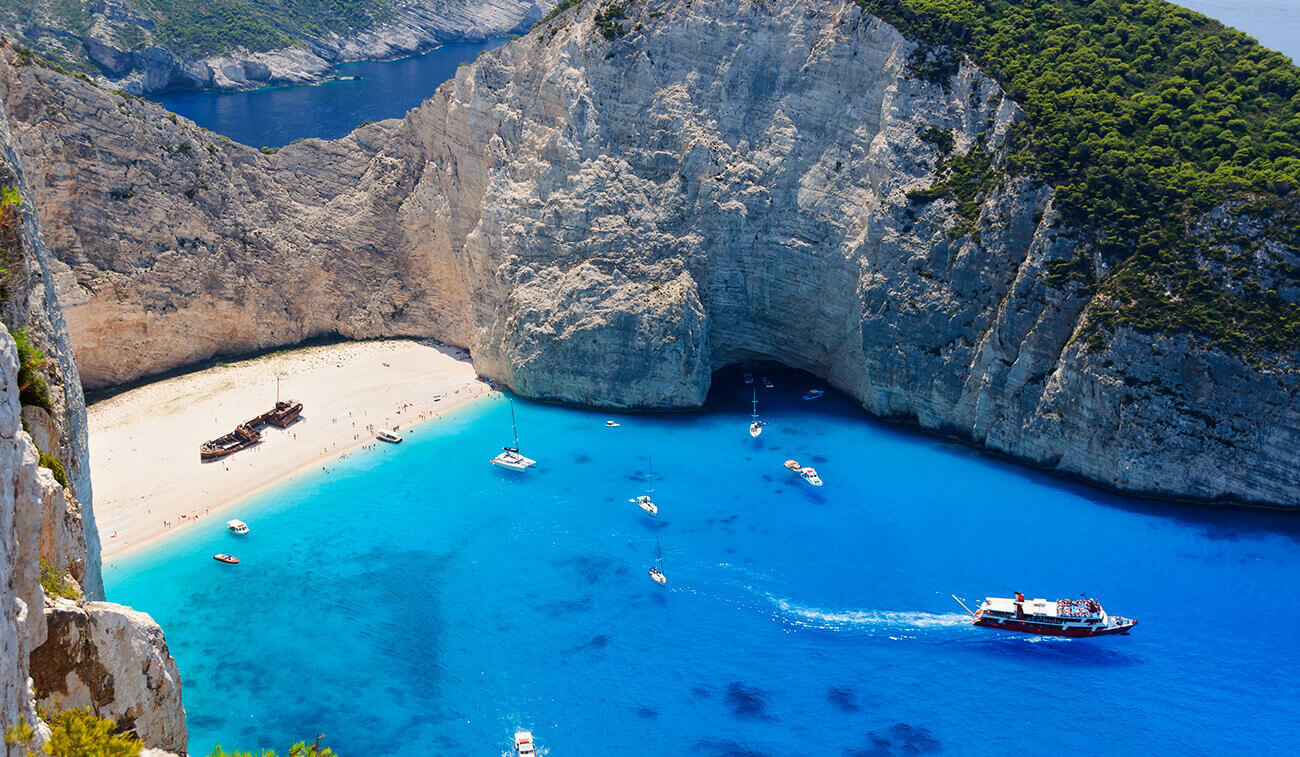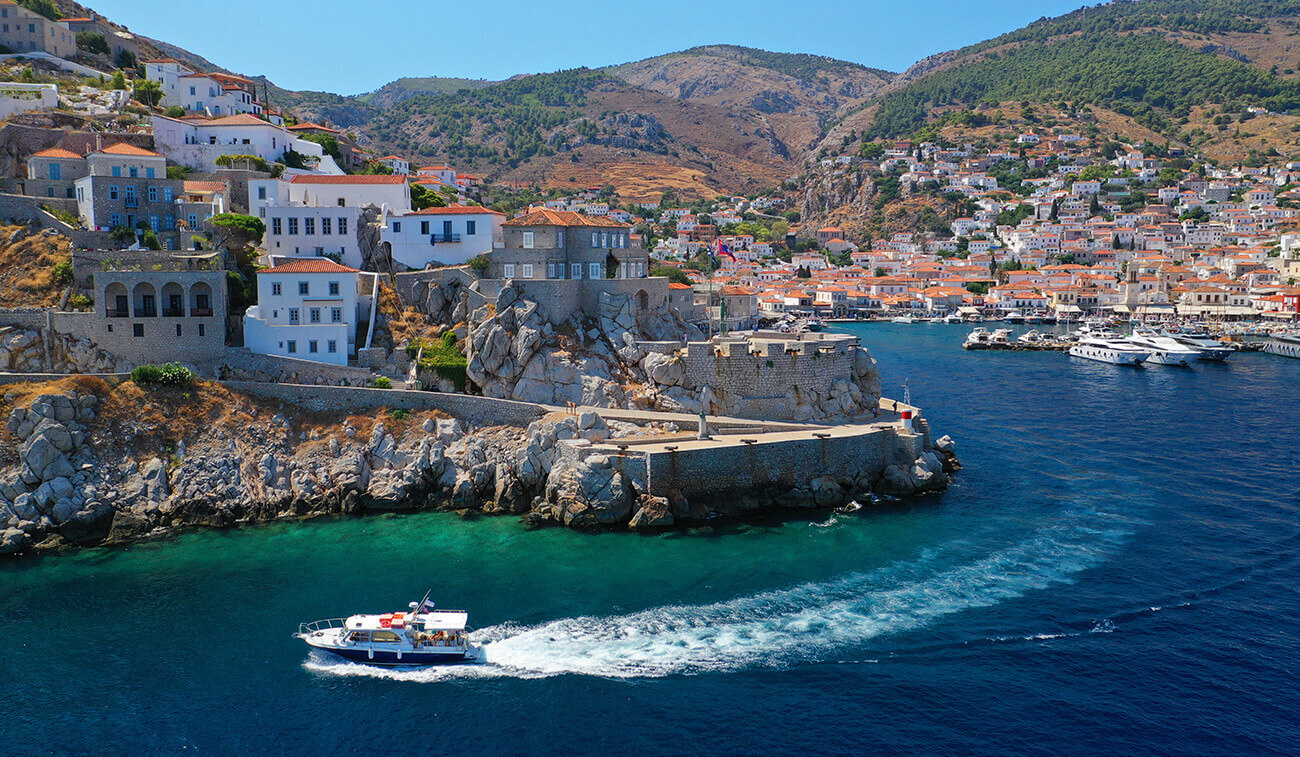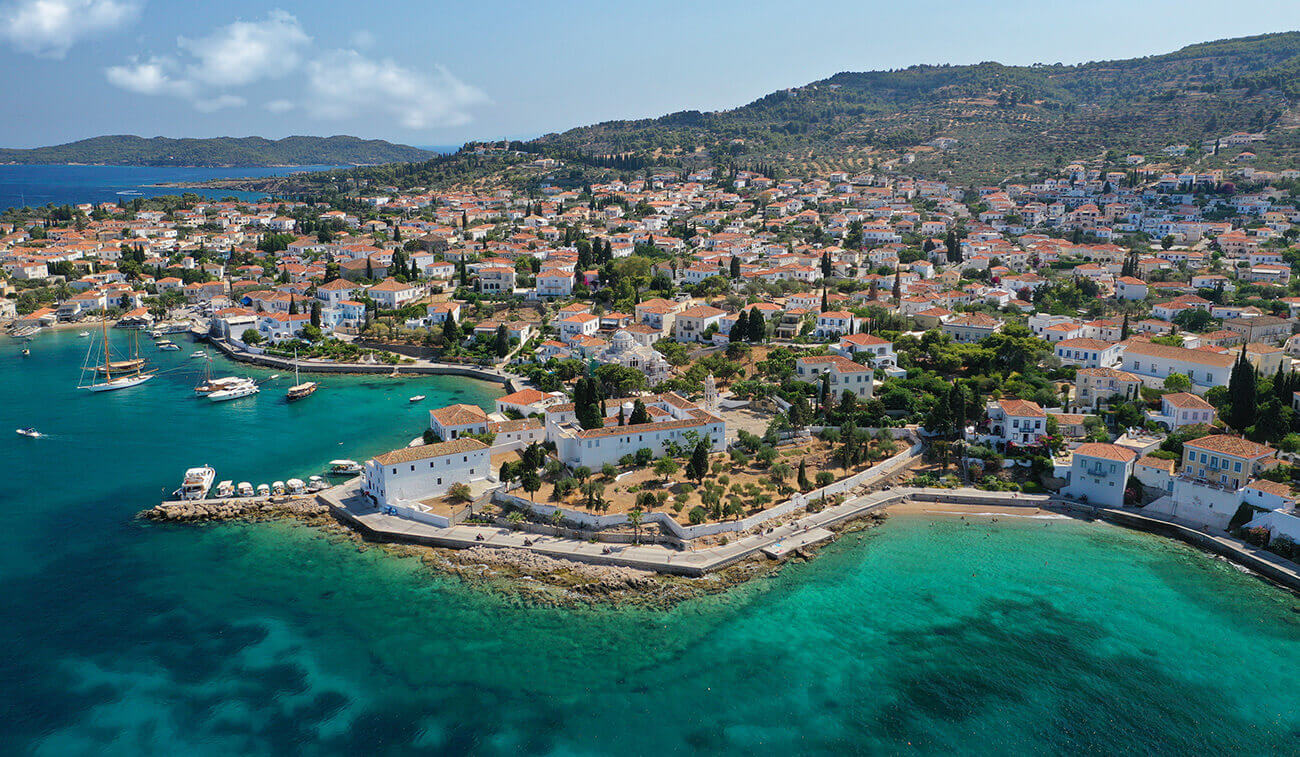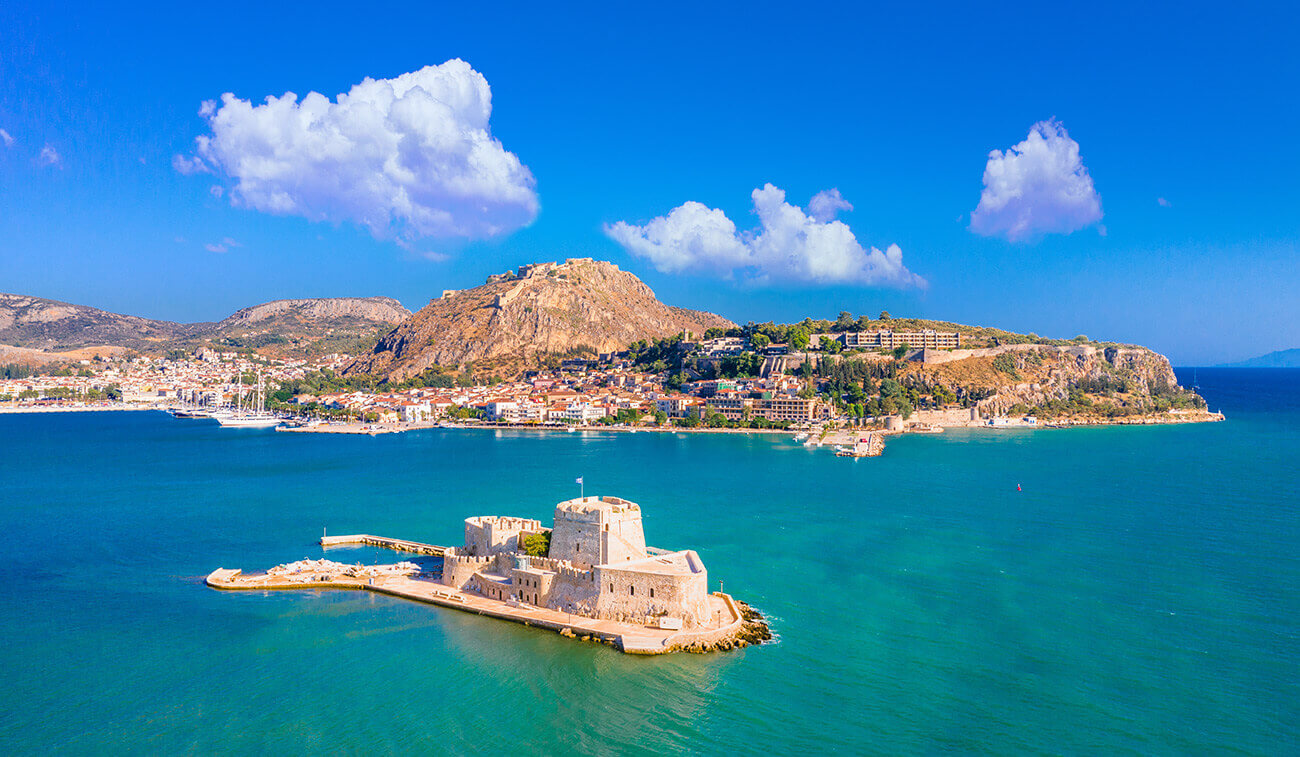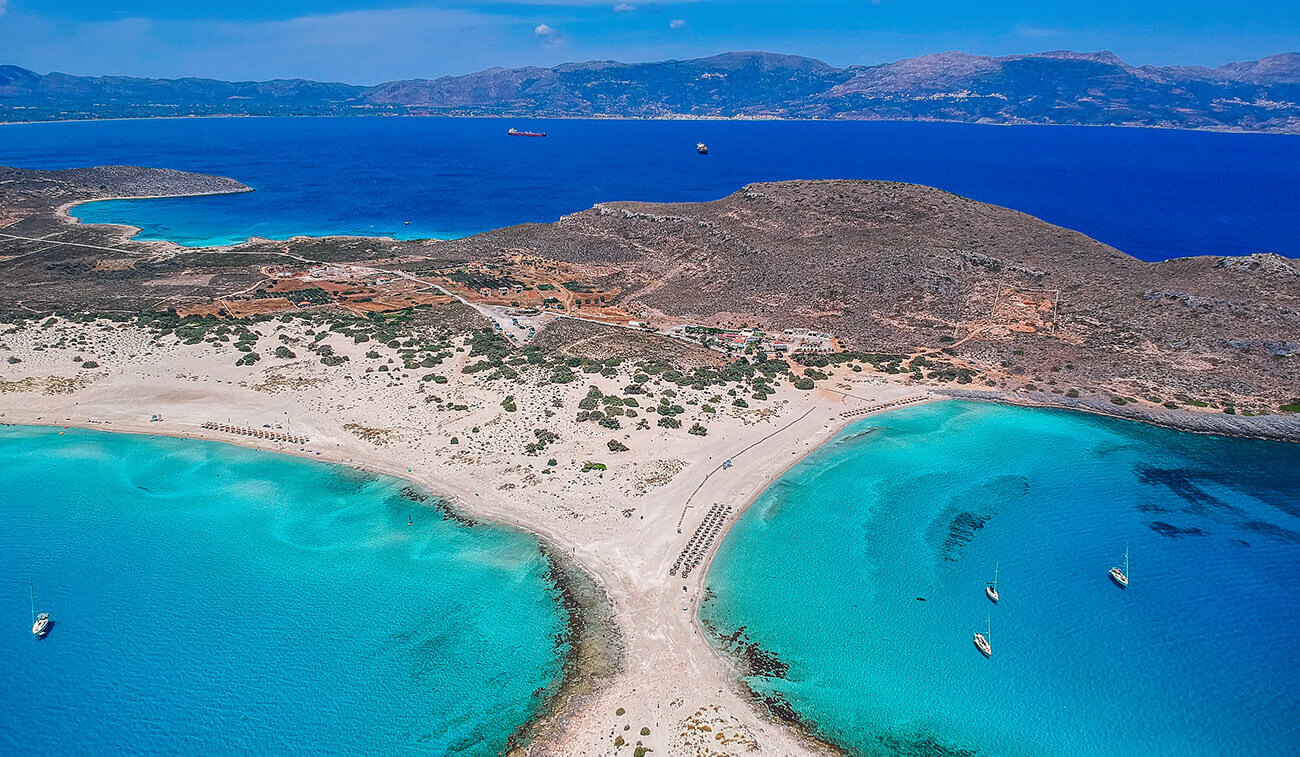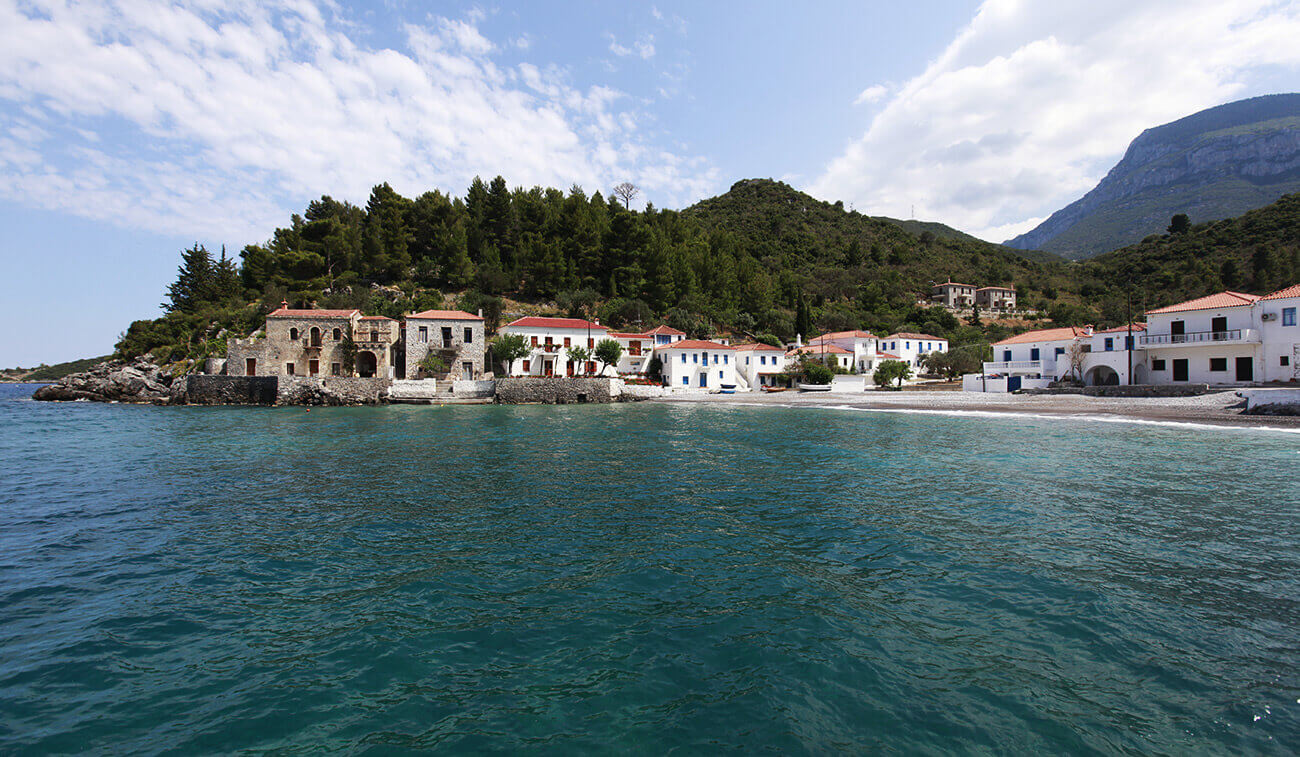CORFU
Corfu (or Kerkyra in Greek), its rich multi-cultural heritage, its historic monuments, its crystal-clear blue seas, and the perfect weather most of the year explain why Corfu is one of the most cosmopolitan Mediterranean destination. So you will have the most unforgettable memories when you leave the place and sail to the next destination.
ITHACA
Ithaca is the worldwide famous as the home of Odysseus, is symbolizes the return to the haven. Ithaca is very peaceful and quiet and it is ideal place for activities like hiking and mountain bike. Scuba diving and sea kayaking are some of the options too, while the Cave of the Nymph will give you the chance to combine an exciting visit with a myth: Odysseus had hidden there the gifts he had brought along from the land of the Phaeacians’.
KEFALONIA
Kefalonia has a lot of beaches with crystal clear of green and blue waters and will take your breath away. This is the biggest Ionian Islands. If you love diving or snorkeling then the seabed around the island will satisfy you 100%. Kefalonia has traditional cuisine and villages, among with the upbeat nightlife will make you fall in love with this island.
LEFKADA
Lefakada is surrounded by of 24 isles – one of them is the Aristotle Onassis’ Scorpios. There you will find sightseeing, churches and monasteries, coves of transparent, turquoise waters, traditional houses and restaurants. You will definitely come again and again to see the hall island.
ZAKYNTHOS
Zakynthos (or Zante) has different type of beaches: there are sandy beaches inside secluded caves where the waters are deep and blue. The perfect destination for superb beaches, great nightlife, beautiful scenery and ideal watersports destination.
HYDRA ISLAND
Hydra is one of the most cosmopolitan locations in the Mediterranean. The fact that Hydra has a unique beauty in its architecture and its landscape, taken together with its proximity to Athens and its important historical interest, have gradually raised the island to the level of an international tourist centre. Undoubtedly, Hydra is one of the most beautiful islands in Greece with a unique atmosphere Pluralistic, vibrant and lively, with trendyrestaurants,bars and clubs. Must see places: The Monastery of Profitis Ilias (found in the early 19th century) at an altitude of 500 meters has an excellent view, Kamini the little fishing village, Episkopi Hydra's pine forest, popular Molos for swimming, Bisti, Ag. Nikolaos and Limioniza for swimming, and Dokos, an islet where Jacques Cousteau discovered a 3000 years old ship wreck.
SPETSES
Spetses is a beautiful island with rich vegetation and many pine trees. It has various wonderful sandy beaches and lovely secluded bays. Its villages are picturesque and authentic and its capital is a real architectural beauty full of two- story neoclassical houses with wooden balconies and colored walls, and narrow s t o n e - p a v e d a l l e y s . Ar c h a e o l o g i c a l findings indicate that Spetses has been inhabited since Early Bronze Age (also called first Hellenic Era, about 2500 BC). One of the most famous heroes of the Greek Revolution was the Spetsiote female captain Lascarina Bouboulina who took the command of her husband’s fleet when he died, fought in many important battles and spent most of her fortune to finance the war.
NAFPLIO
A special place, mysterious, blessed, full of natural beauty and culture. Spectacular scenery meets gorgeous beaches and medieval atmosphere. It was the capital of the First Hellenic Republic, since the start of the Greek Revolution in 1821 until 1834. Its beauty is well known worldwide.
Most important sites are Palamidi Castle with 913 steps leading you from the town to the fortress, built by the Venetians circa 1711, and used much later as a prison for Theodoros Kolokotronis himself, hero of the Greek revolution, and Bourtzi Island, a tiny islet facing the Nafplio port, where Antonio Gambello built a fortress designed to fit the narrow shape of the island in 1417.
ELAFONISSOS ( SIMOS )
Elafonissos is located in the Bay of Laconia (Lakonikos Kolpos), just north of the island of Kythira. The island was a peninsula in ancient times and the sandy isthmus that separates it from Peloponnesus is only a few feet underwater, which is why the sea has a remarkably alluring color. The largest beach of Elafonissos is Simos, for some one of the most spectacular beaches of Greece, with its almost tropical look of soft, white sand and clear, turquoise waters. At the port town, there is a picturesque line of taverns, where visitors can enjoy freshly caught fish and seafood.
KIPARISSI
Kiparissi is situated in a spectacular bay surrounded by steep mountains that provide good sheltered mooring from all but north easterly winds. There are three quays; town quay, chapel cove and the north west quay, each appropriate for sheltering from a different wind direction. The village has several taverns and basic provisions can be found. Between Kiparissi and Gerakas there are some wonderful anchorages providing the weather is calm.


